Hello from Castrum Lusitania, my fortress in northern Portugal. Welcome to another edition of our weekly newsletter.
Thinking about storytelling is part of the gig and I do it constantly - as, I can only imagine, most creators of any kind do. And this week Kieron Gillen’s newsletter listed annoying script choices in a post I very much recommend to any professional or aspiring writer. He called them THE FIVE SCRIPT CHOICES IN PROFESSIONAL COMICS WHICH MAKE ME MOST REGULARLY TUT and you can read them HERE.
They are all good, but one of them I share 100%, so let me replicate it. He called it PARALLEL CAPTIONS AND DIALOGUE and he used an example from his own work to illustrate it:
I never liked this type of writing because it doesn’t work if you read it as you’re supposed to: from left to right and top to bottom (in our western case, at least). That’s because the captions only work if you read them isolated and so do the balloons. They don’t work in the sequence that they’re laid on the page, forcing you to either read it twice (first the captions and then the balloons) or jump back and forth between two different things. A movie equivalent would be having narration and dialogue at the same time about different subjects.
Then on Bluesky, either a coincidence or perhaps also triggered by Kieron’s newsletter, someone was asking about writing pet peeves. Which reminded me of a very specific thing I detest: when a character turns to another and says: What do you think this is, a movie/comic/videogame? and it is exactly one of those things. I HATE it. It sounds cynical and lazy.
But enough negative ones, because I can’t stop being in awe of The Sopranos. So let’s talk about the opposite of pet peeves. Would that be a… proclivity? Anyway, I’m halfway through season 6 on my rewatch and it still blows my mind how well written that thing is. And this week I was reflecting on the extraordinary way the show does exposition.
Both Tony’s feelings/thoughts and past life work with current events to create his multidimensional character. But, even if we have some flashbacks here and there, almost all of his past and emotions come through exposition. Now, having lots of exposition can be a very boring thing and feel very unnatural when it’s done wrong. You know, imagine Tony coming home and telling Carmela: As you know, I’m a mob boss, very tough guy, but I also have panic attacks and I hate my mother. Anyway, what’s for dinner? Weird, huh?
The show, being probably the best there ever was, solves this problem elegantly and effortlessly: get Tony Soprano talking to psychiatric. In that context, him talking about his feelings, talking about his past, suddenly is very natural and what is exposition is also character development, plot unraveling, tension building.
Finding a context to make exposition natural is a great tool. Lots of movies use interviews or news pieces as a way to deliver important background information. In the extraordinary movie Tár, the main character is interviewed in the beginning, allowing the audience to learn a lot about who she is, what she wants to do and how important that is to her. Character, objective and stakes are all laid out in front of us, giving away all the info we need to understand everything that comes after that.
Another exposition tool comes from John Yorke’s mandatory book Into the Woods, which is to let emotion take over so it feels natural. For example: woman comes home and finds her husband feeling unwell. She turns to him and says: as you know, I’m a doctor so let me check you. Stupid, right?
Now imagine the same thing. Woman comes home, husband unwell. She tells him to sit, he says he’s fine, she wants to check his temperature, he refuses, she yells: Jesus Christ, John, what good is it to be a doctor if I can’t help my husband? Definitely better.
John Yorke knows his storytelling. Read his book.
Project Red
I spent hours drawing a wallpaper this week. I could write many words about it, but I’ll show you a bunch of photos and a video instead.
I chose a two page scene to do this, with the knowledge I won’t have to draw this room anytime soon. We got to be reasonable about crazy stuff like this.
Remember: you can now buy Phenomena Book 3 (and 1 and 2)
—
I’ll see you soon,
André


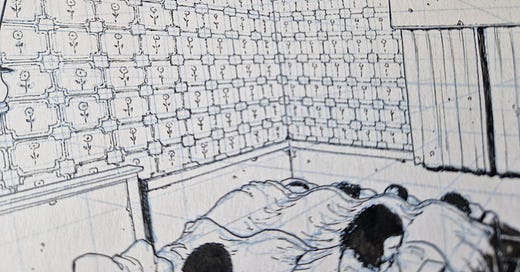


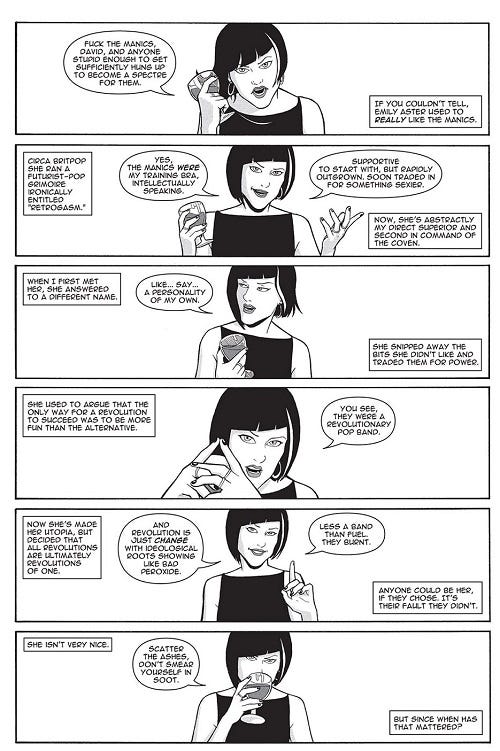

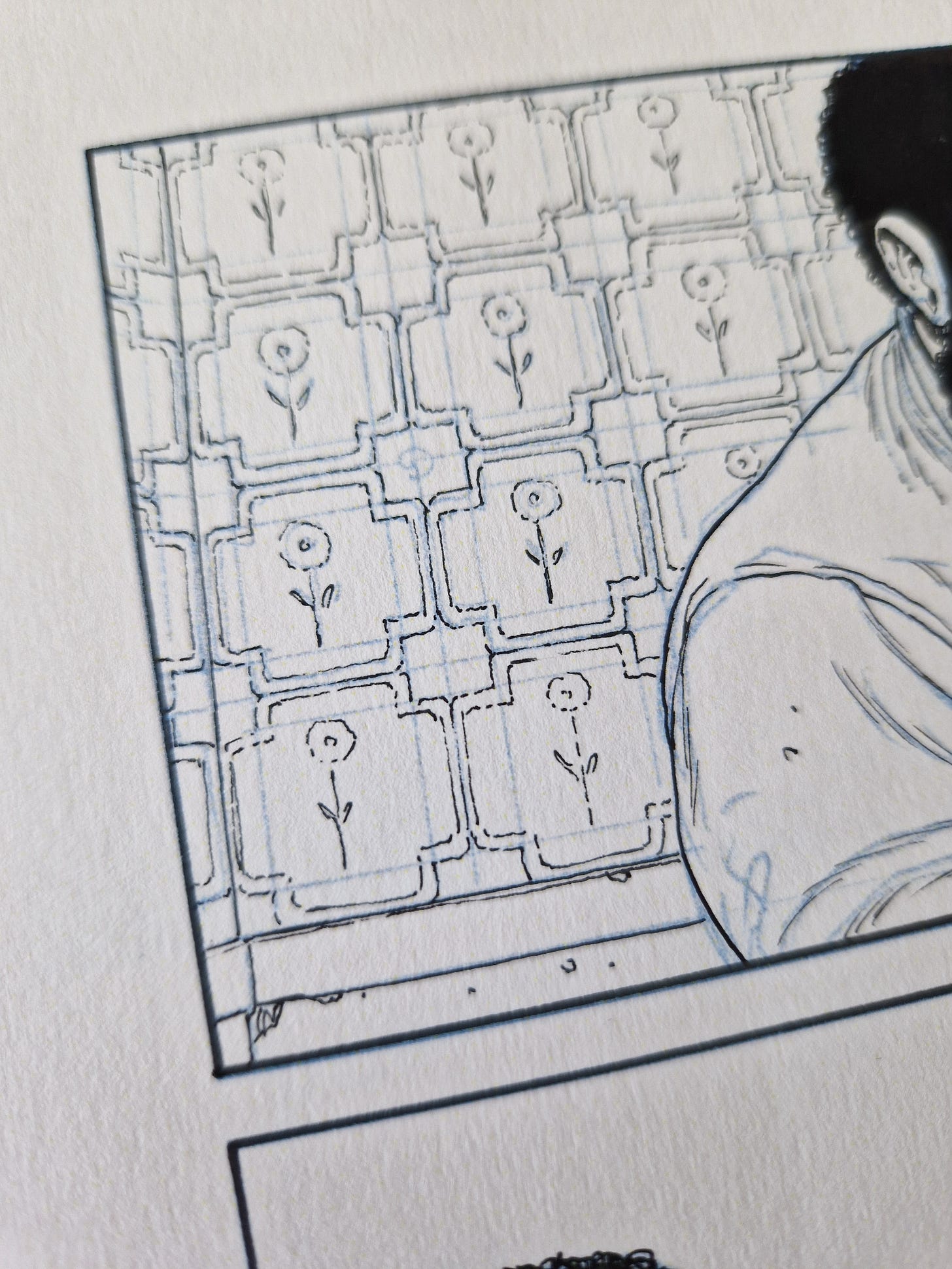
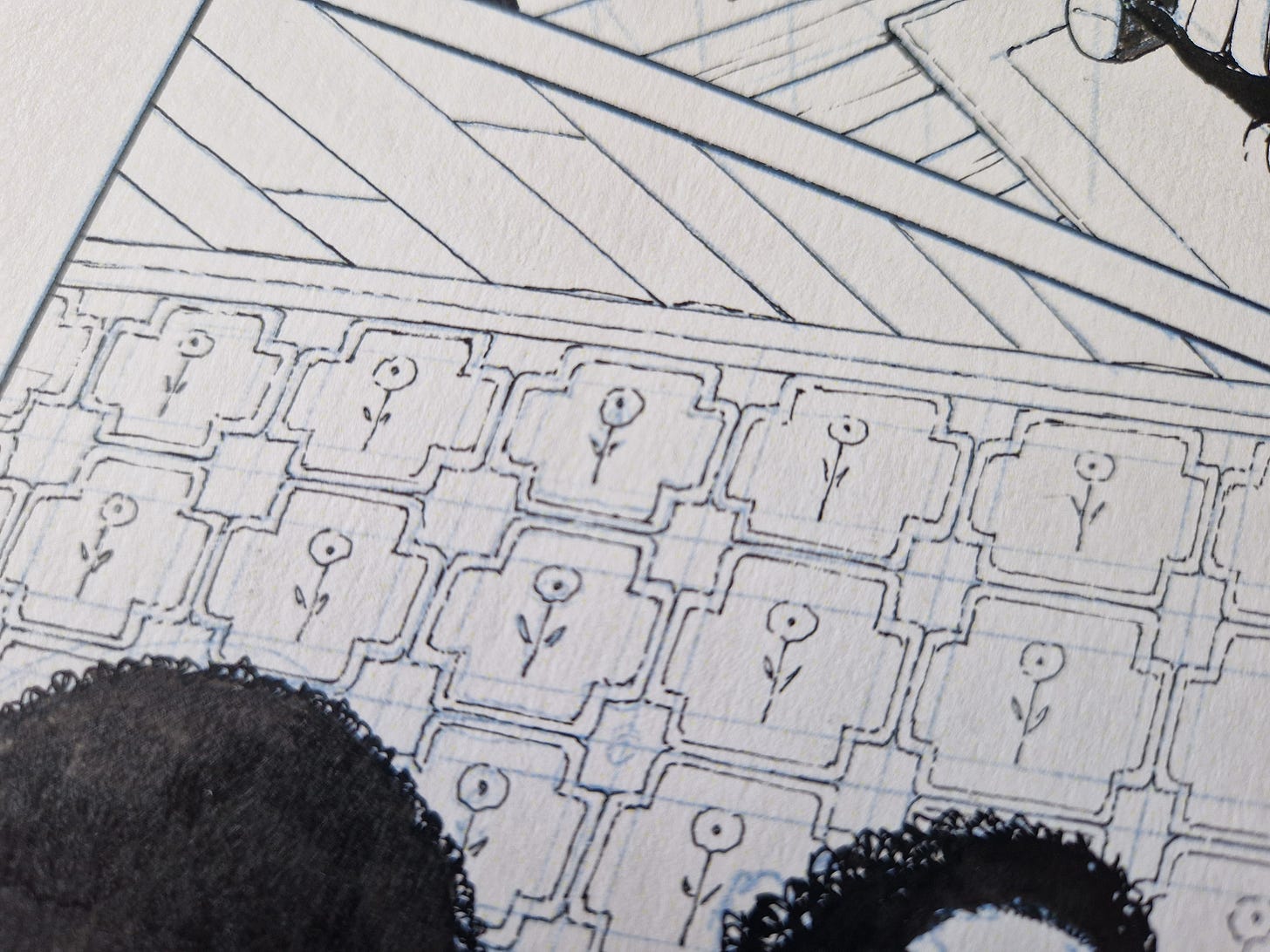
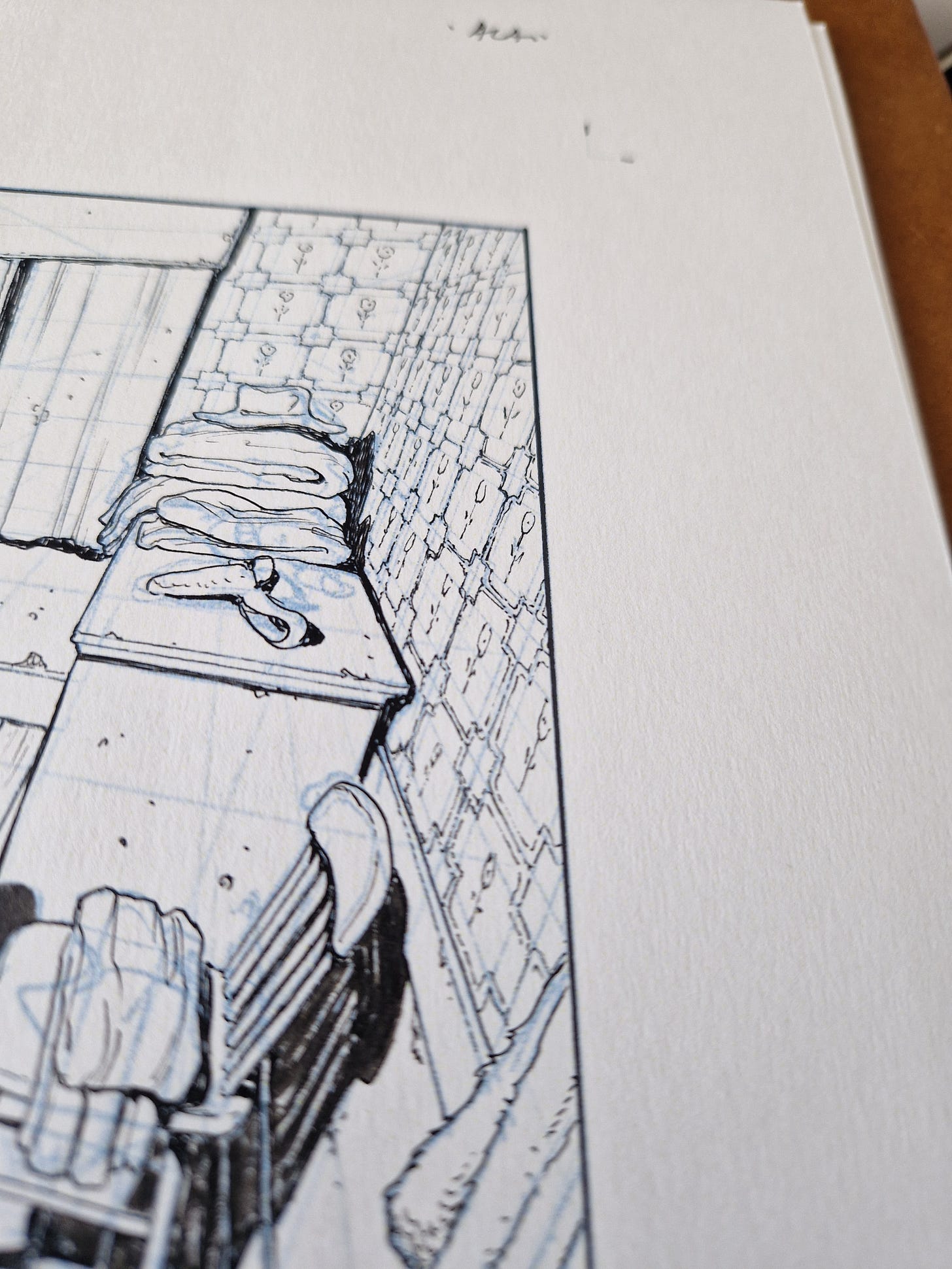
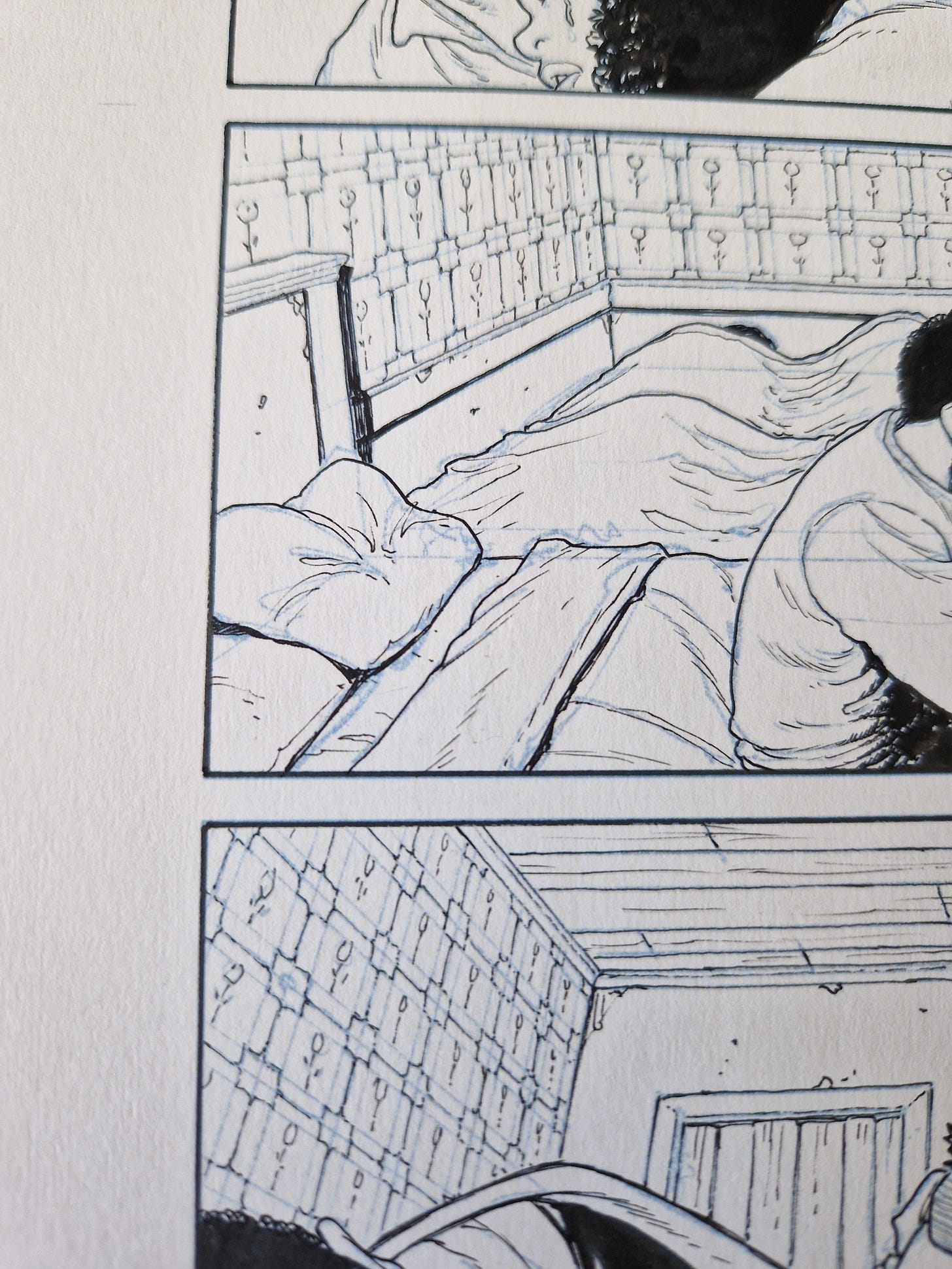
Oh hot damn. Just got all of the Phenomena. Cannot wait.